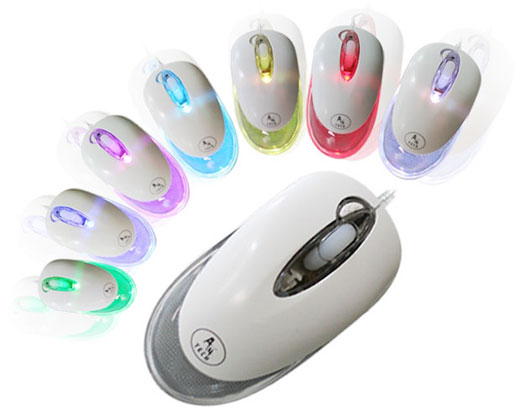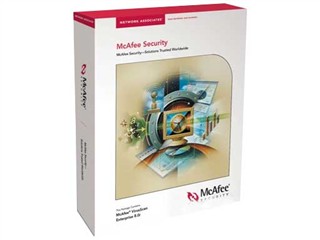
How Windows 8 Could Be “Windows Great”
Before Microsoft's Windows Server 8 Reviewers Workshop, Mark Minasi had some definite ideas about what he wanted to see in the newest Windows OSs. more
Windows 8 and Windows Server 8 "Reimagining" and Whither Windows Phone?
Windows Server 8 is a huge upgrade for businesses, one that will have ramifications a decade down the road. more
Tip: Improve Windows 8 with Third Party Utilities
 With developers now tearing up the Windows 8 developer preview and looking for hidden gems, we're going to soon see an amazing number of utilities aimed at improving the Windows 8 experience and, in some cases, making it work more like its predecessors. While I can't endorse or support that kind of thing, let alone recommend individual utilities quite yet, I figured it would be useful to collect what's out there in a single location. more
With developers now tearing up the Windows 8 developer preview and looking for hidden gems, we're going to soon see an amazing number of utilities aimed at improving the Windows 8 experience and, in some cases, making it work more like its predecessors. While I can't endorse or support that kind of thing, let alone recommend individual utilities quite yet, I figured it would be useful to collect what's out there in a single location. more Mailbag: Windows 8 Developer Preview

As you might imagine, my inbox is overflowing with questions about Windows 8, thanks to Microsoft's recent release of the first public Developer Preview. I don't have all the answers, but here are some of the more representative questions I've received in the past 10 days. more
Windows 8 Tip: Using a Mouse
The new Windows 8 shell, as exemplified by the Start screen, works equally well with the keyboard and mouse, or with a Tablet PC-style stylus, as it does with touch. But because a mouse (or a similar device, like a laptop's trackpad) will be the most commonly used pointing device in Windows 8, it makes sense to investigate how you use one in this supposedly touch-centric UI. Shocker: It works just fine. more
Paul's Picks: Windows 8 Developer Preview and Small Business Server 2011 Essentials
See why Windows 8’s UI is so successful that Microsoft is using it in other products; plus, learn why Small Business Server 2011 Essentials still needs Office 365 to ensure total SMB domination. more
Windows 8 Tip: Windows Key Shortcuts In the first in a series of articles about new keyboard shortcuts in Windows 8, I'll examine a new class of keyboard shortcuts that involve the Windows key, since this key is gaining new importance in this release. more
Reimagining Microsoft: How Windows 8 and Windows Server 8 Change the Rules
Microsoft has put a lot of effort into Windows 8 and Windows Server 8, and that effort shows: The new and improved feature list for Windows Server 8 runs into the hundreds, with massive enhancements to existing features (like Hyper-V) and long-overdue upgrades to less flashy features -- like improvements to CHKDSK and IP address management -- that will make Windows System Administrators more efficient and give them back some precious time. more
Windows Weekly 226: Live From Anaheim and the BUILD Conference: Windows 8 Revealed In the latest episode of the Windows Weekly podcast, Mary Jo and I are joined by special guests Stephen Chapman, Travis Lowdermilk, Rafael Rivera, Sandro Villinger, Tom Warren, and Long Zheng live from the Expo show floor at BUILD in Anaheim, California. We discuss the Windows 8 Developer Preview, and shenanigans ensue. more
Windows 8 Developer Preview: Windows Explorer Screenshot Gallery

Despite focusing quite heavily on the future with the new Windows shell and its Start screen and tailored, Metro-style apps in Windows 8, Microsoft is also investing in the classic and depreciated Windows desktop. This includes a new version of Windows Explorer.
Windows 8 Developer Preview: Client Hyper-V Screenshot Gallery
Where Windows 7 includes the software-based virtualization solution called Windows Virtual PC, Windows 8 will usher in a new era with a true hypervisor-based virtualization platform called Client Hyper-V. Client Hyper-V utilizes the same Hyper-V Manager user experience as Hyper-V on Windows Server and offers dramatic performance, scalability, and compatibility improvements over Windows Virtual PC. more
Windows 8 Developer Preview: Explorer Auto-Personalization Screenshots
As Rafael Rivera and I previously revealed, Windows 8 includes a new Aero auto-colorization feature that automatically configures the color of Aero glass elements--like Windows Explorer windows and the taskbar--based on the desktop wallpaper. Here's what it looks like. more
Windows 8 Developer Preview: Control Panel Screenshot Gallery
Here's a screenshot gallery showing off each of the screens in the Windows 8 Developer Preview Control Panel. more
WinInfo Short Takes, September 16, 2011
An often irreverent look at some of this week's other BUILD news, including Windows 8's fast start, the Windows 8 schedule, my top two Windows 8 questions (that I can answer) and the single most confusing thing about Windows 8, Microsoft's stand on Flash in Windows 8, Microsoft's new billion dollar business and a potentially huge ad partnership between AOL, Microsoft, and Yahoo! more
BUILD: Reimagining Windows Is Key to Microsoft Reimagining Itself
In town for his company's annual meeting with financial analysts, Microsoft CEO Steve Ballmer surprised the crowd at the BUILD Conference this week in Anaheim, California, by closing out the day-two keynote on Wednesday. more
Windows 8 Refresh Your PC Screenshot Gallery
Here are some screenshots of the new Refresh Your PC capability in Windows 8. more
Windows 8 PC Repair Screenshot Gallery
Here are some screenshots of the new PC repair tools available in Windows 8. more
Windows 8 Developer Preview Setup Screenshot Gallery
Here's a quick screenshot gallery showing off the process of installing the Windows 8 Developer Preview. more
BUILD Day Two Keynote Live Blog
Today, Microsoft holds day two of its BUILD Conference with a keynote address that will unveil Windows Server 8 and its cloud strategy. I'm live blogging the event with fellow bloggers Ed Bott, Mary Jo Foley, Kip Kniskern, Rafael Rivera, Paul Thurrott, Tom Warren, Long Zheng. Join in! The event begins at 9:00 am PT/12 pm ET. more
BUILD: Microsoft to Detail Windows Server 8 On the second day of its inaugural BUILD Conference, Microsoft will detail the next major version of its server OS, Windows Server 8. more
Windows 8 Features and Terminology
As the author of several books about Microsoft platforms--Windows Phone 7 Secrets most recently, and of course the coming Windows 8 Secrets--I'm very concerned about documenting both the features of these platforms--applications, services, and so on--but also the terminology that Microsoft uses to describe them. These things have names, and need to be referenced properly. Here's an early peek at where I'm at. more
Windows 8 Developer Preview: Samsung 700T Photo Gallery
Microsoft this week provided reviewers with a very temporary loan of a specially made slate PC running the Windows 8 technical preview. And when I say temporary, I mean temporary: We have to give this machine back on Thursday evening before we leave BUILD. more
BUILD: Microsoft Announces Windows 8 Developer Preview Microsoft announced a developer-preview release of Windows 8 at its first-ever BUILD Conference, ushering in a new era for both PC users and developers. Windows 8 is a "reimagined" version of the world's most popular software, as Microsoft executives are fond of saying, offering both an iPad-like "touch-first" user experience as well as the traditional Windows desktop. more
Windows 8 Developer Preview Screenshots, Part 2
Here's a collection of live screenshots from Windows 8 build 8102--the developer preview--running on a loaner slate PC. (Part 2 of 2)
Windows 8 Developer Preview Screenshots, Part 1 Here's a collection of live screenshots from Windows 8 build 8102--the developer preview--running on a loaner slate PC. (Part 1 of 2) more
Windows 8 Developer Preview Screenshot Gallery
Here's a small collection of Windows 8 developer preview (build 8102) screenshots, courtesy of Microsoft. more
Windows 8 Developer Preview
On Monday, I attended an all-day reviewer workshop for Windows 8, Microsoft's next desktop operating system. And while it may be a while before I can adequately describe my thoughts about Windows 8, for now it goes something like this... more
Windows 8: A Reimagined PC, But What About Businesses? At its first-ever BUILD conference this week in Anaheim, California, Microsoft is showing off its upcoming Windows 8 and Windows Server 8 releases to the public for the first time. more
BUILD: Live from Anaheim, CA This will serve as the central clearing house for all the Windows 8 articles, blog posts, screenshot galleries, and other content I create while attending BUILD in Anaheim, California this week. more
Heading Into BUILD, What We Know About Windows 8
Next week, Microsoft will host its inaugural BUILD conference, which has one aim and one aim only: To reveal Windows 8 to the world.


























 l "digital assets," including pictures and music collections.
l "digital assets," including pictures and music collections.



